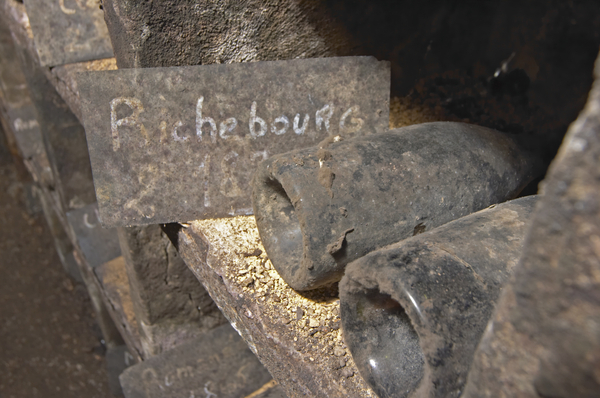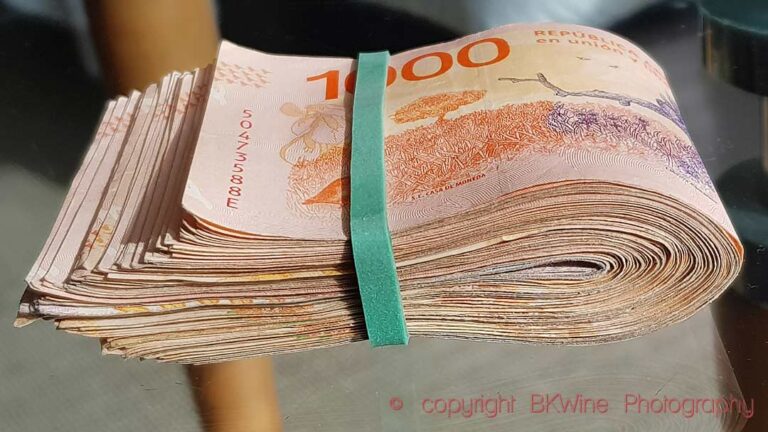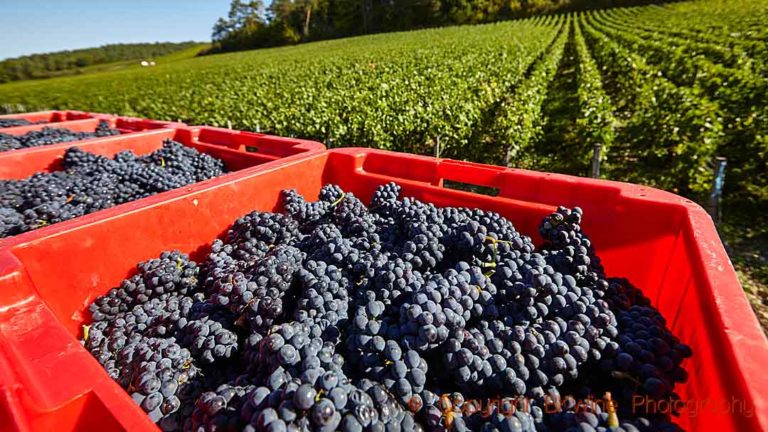Mother Nature was unkind in 2010 – an earthquake in Haiti, floods in Pakistan and an unpronounceable volcano in Iceland. There was huge financial trauma; many are still recovering. But commodities and collectibles – especially wine – have carried on regardless. The art market – or at least Damien Hirst’s reputation – wobbled before the summer but you would never have noticed as record prices were set for works by Warhol and Modigliani. As with the fine wine market, there was intense demand at the very high end.
Text: Stuart George
Photography: Per Karlsson, BKWine
Thanks to a thriving market in Hong Kong, clearance rates at wine auctions were outstanding and record prices were achieved. Annual totals were the best ever, exceeding previous highs seen in 2007. The three leading wine merchants in the UK – Berry Bros. & Rudd, Bordeaux Index and Farr Vintners – each reported sales of over £100 million in 2010.
The auction houses in 2010
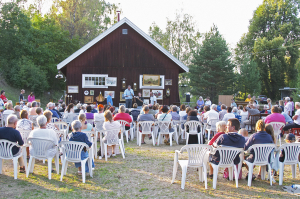
Auction sales of fine wine in 2010 totalled $408.1 million. New York-based Acker Merrall & Condit achieved $98.5 million in worldwide sales, the highest total ever achieved by a single auction house in one year. Nearly two-thirds of that figure came from Hong Kong.
Sotheby’s more than doubled its 2009 total to achieve $88.27 million. Sales in Hong Kong increased by 268% year on year. Christie’s was in third place with $71.5 million, about the same as its 2007 peak.
The three leading wine merchants in the UK each reported sales of over £100 million.
Auction sales of fine wine in 2010 totalled $408.1 million.
In 2009, Zachys had the highest gross of any wine auctioneer. Although it totalled a sizeable $56.51 million in 2010, this represented “only” 11% growth year on year. Its Hong Kong revenue increased by just 3%. By comparison, Acker Merrall was up by 94%, Sotheby’s by 111% and Christie’s by 69%. Fine wine auctioneering is an intensely competitive business.
Overall, New York sales were up by 34%, the UK and Europe by 58% and Hong Kong by a dizzying 157%. New York’s relatively modest figure suggests that wine that previously would have been sold there is now going to Hong Kong.
The Red Hammer
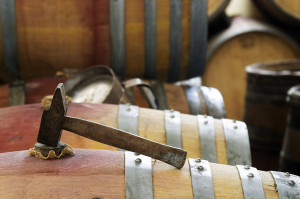
As in 2009, the fine wine market in 2010 was dominated by the Asian market and by the Lafite brand.
Chinese wine collectors will spend as much as it takes to get what they want. In October, three bottles of Lafite 1869 were each sold by Sotheby’s for HK$1,500,000 (€149,258), making this the most expensive 75cl bottle of wine ever sold. They were of course sold to “Asian Private” clients.
The still unbottled Lafite 2009 made HK$300,000 (€29,852) at the October sale, an astonishing price that will probably encourage the Bordelais (or at least Lafite) to price their 2010s even more ambitiously.
A bottle claimed as the only known existing Impériale of Cheval Blanc 1947 was sold by Christie’s in Geneva on 16 November for CHF298,500 (€239,051). Pro rata, however, it did not match the Lafite 1869. A six-litre Impériale of that would be worth CHF1,450,390 (€1,161,530).
Through the Looking Glass
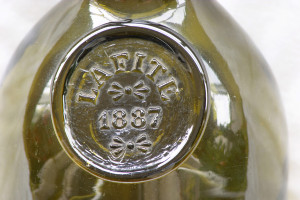
Prediction is always difficult. In January 2004, Bill Gates told the World Economic Forum, “Two years from now, spam will be solved.”
But, as far as fine wine is concerned, some things are near-certainties. The 2010s will be awesomely expensive. Unless the economy slips badly, then the fine wine market will continue to prosper. Bargains will be hard to come by.
Doubtless there will be a stampede for Lafite 2008 when it is released, with its etched Chinese symbol on the bottle. Lafite is apparently the only Bordeaux estate to have translated its entire website into Chinese. Its neighbour Mouton has shrewdly chosen the Chinese artist Xu Lei for its bespoke 2008 label. (*)
But, as far as fine wine is concerned, some things are near-certainties. The 2010s will be awesomely expensive. Bargains will be hard to come by.
The short-selling of Lafite 2009 on the London based fine wine exchange Liv-ex in June caused “outrage” as if the short-sell was akin to displaying a Tom of Finland drawing in a shop window. But the “traditional” fine wine trade had better get used to this sort of thing. How and where fine wine is traded has changed forever. We live in an age of border-less capital in which it is easy to buy and sell wine in London, New York, or Hong Kong, wherever you are.
Anniversary wines
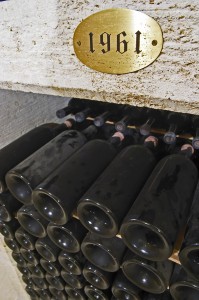
With anniversary wines, those celebrating a 20th anniversary or birthday in 1991 are unlucky – it was a dreadful Bordeaux vintage. Tokaji was good, though, as was Port. California had an excellent year.
For 21st anniversaries, 1990 offers a lot of choice. It was a great year in Bordeaux for both red and sweet wines. Red Burgundy was outstanding and some good whites were also made. The Rhône and Champagne also had fine years, as did Barolo and Barbaresco.
The wine of choice for 25th celebrations would be Mouton Rothschild 1986 – expect demand and prices for this to increase. Very good white Burgundy was made and it was a good year for Penfolds Grange.
Although overshadowed by 1982, 1981 clarets (and Champagnes) can be surprisingly pleasant. 1971 is another unfashionable Bordeaux year but worth a look, especially Cheval Blanc. DRC did well, and fine wines were made in the Rhône (especially Hermitage La Chapelle), Champagne and the Mosel. This is arguably the best ever vintage of Grange.
People celebrating their 50th are deeply fortunate. 1961 was a truly great Bordeaux vintage, with Latour and Palmer especially distinguished. Hermitage La Chapelle of this year is the most expensive vintage available of this wine. Barolo and Barbaresco were also good, though this is long before Angelo Gaja’s barrel-influenced alchemy.
Wines from 1951 and 1941 are mostly terrible, though some ’41 Madeiras are thought to be good. Grange was first made in 1951, though never released commercially.
Port was terrific in 1931, especially Noval Nacional. The first vintage of Dom Pérignon was made in 1921, an auspicious year for Champagne in which Pol Roger produced a renowned wine. Romanée-Conti and d’Yquem were fabulous.
There were riots in Champagne in 1911, though the wines were still very good. Finally, the “Comet” vintage of 1811 was great throughout Europe’s classic wine regions. Bottles still occasionally appear at auctions and can be drunk with pleasure by centenarians!
(*) Editor’s note: However, the Château Mouton-Rothschild has maintained that the choice of a Chinese artist for the label was a purely artistic choice and not one based on an enhanced orientation towards the Chinese market.
Text: Stuart George, www.stuartgeorge.com
Photography: Per Karlsson, BKWine
Stuart George is one of the contributors to BKWine Magazine. Read more of his articles by clicking on his name at the top of the page.
